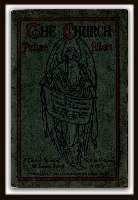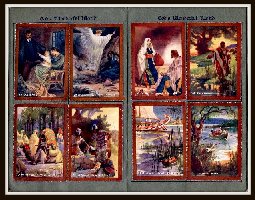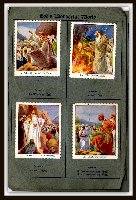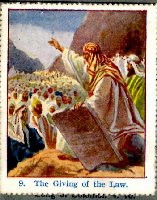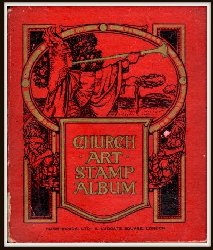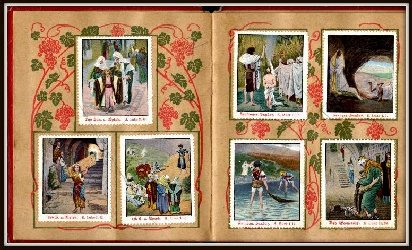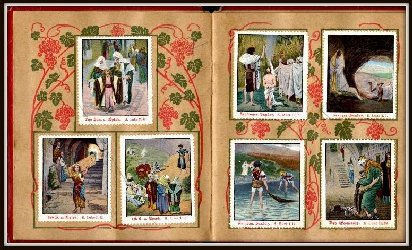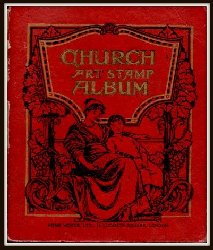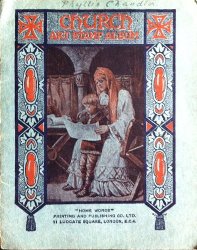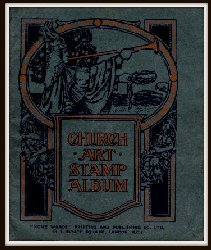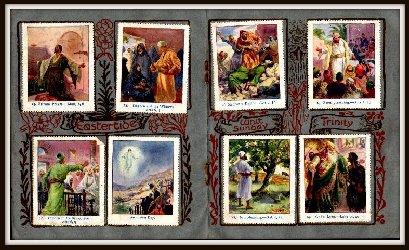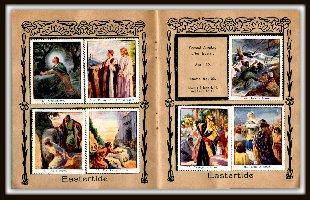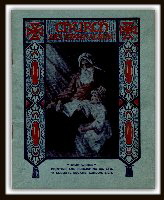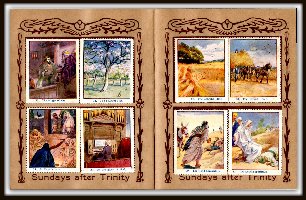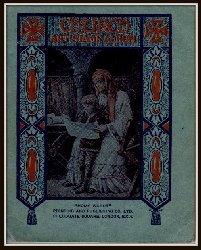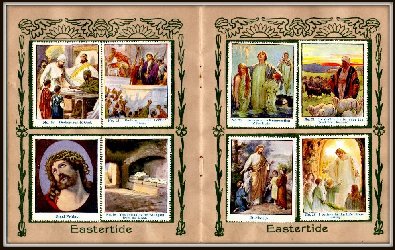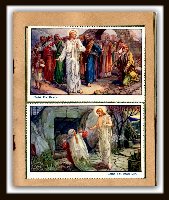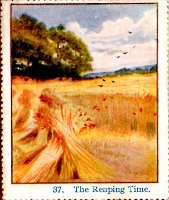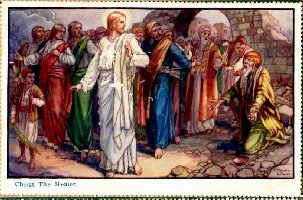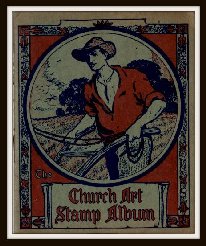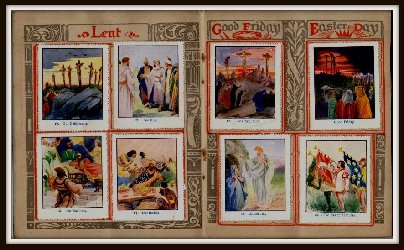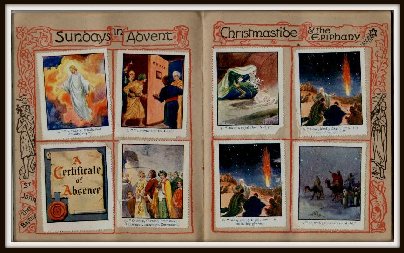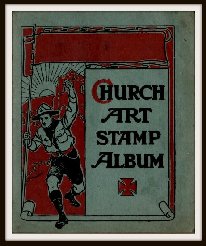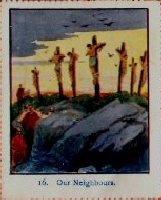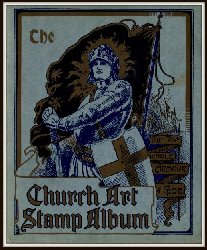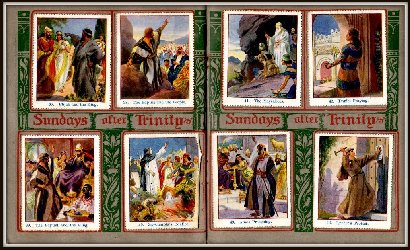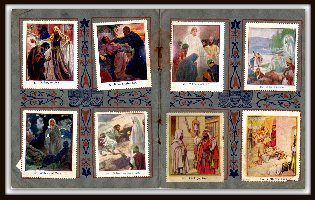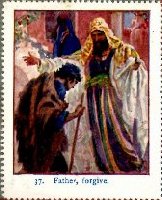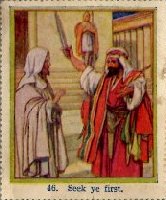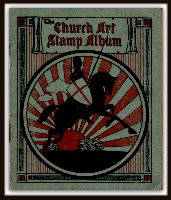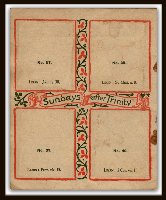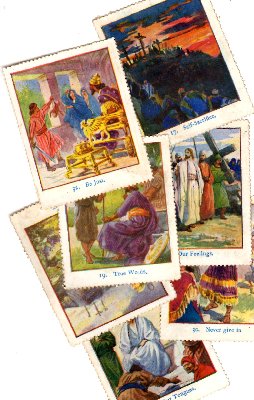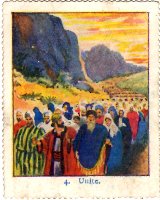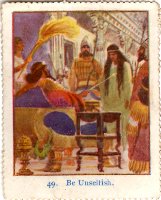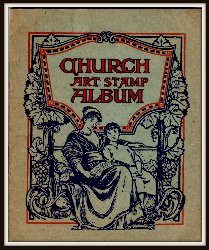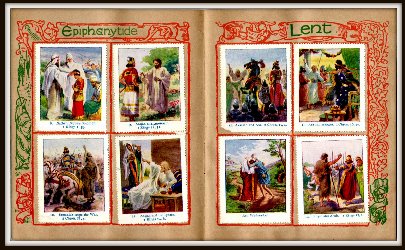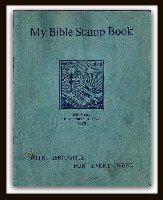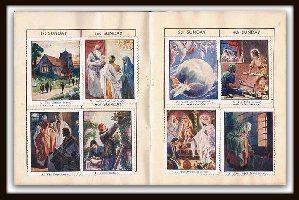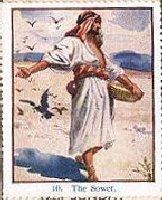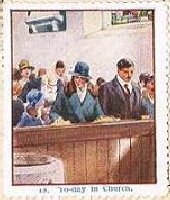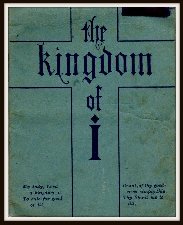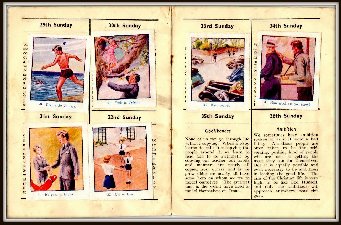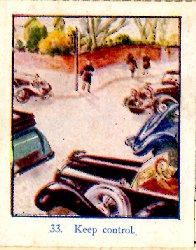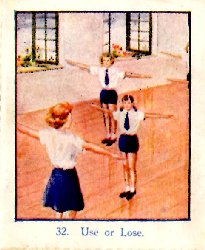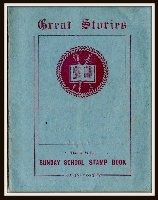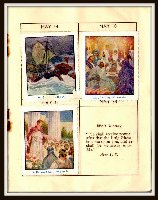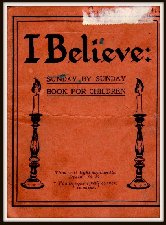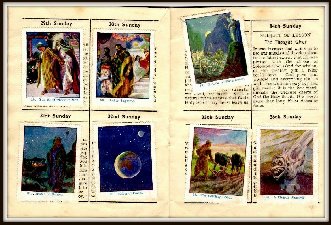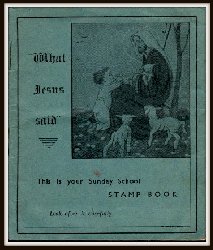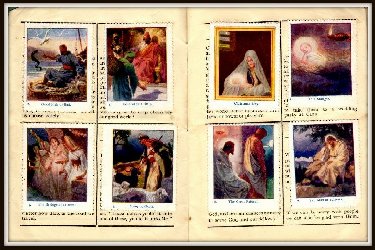|
|
||||||||||||||||||||||||||||||||||||||||||
 |
||||||||||||||||||||||||||||||||||||||||||
 |
|||
|
Home Words 11 Ludgate Square Home Words have produced stamp albums with a number of titles. While some titles may have superseded another, a series with different titles each year seem to have run concurrently with The Church Art Stamp Albums in the period just after World War II. The stamps in these latter titles all have the same format while the pages of text to be read before having the stamp stuck over them. Perhaps these represent deluxe and basic albums available, with the thinner card ones costing less - or perhaps different styles of Sunday schooling requiring different albums. The Church Picture Album A Church Series of Nature Picture
The other album with the wrong stamps was collected by Evelyn Baker, whose address is present but not easy to read as it too is penciled in onto the dark green cover. A group of three of these, all of the same edition again, belonged to three siblings; Sarah, Charlotte and Isaac Wilkinson of Reapsmoor. All are as those pictured above, and are complete with stamps. The following year the school had switched to the Church Art Stamp Album, and again all three collected the stamps. Church Art Stamp Album These are recognizable from their covers distinctive artwork and later with deep blue and orange illustrations - at least those in my collection. This artwork is often re-used in later years. However in Other Examples colour variations can be seen. The size has changed over the years, though the illustration motifs have been maintained. Originally the size was 117 x 145 mm, with possibly an alternative concurrent series measuring 112 x 138 mm. Both have card covers with stapled pages. From 1911-12 and 1912-13 come two red hard-cover albums. Both show considerable signs of wear with pages becoming detached. The earlier example belonged to George Kemp. It is complete. Curiously it has one stamp second to last, which is from a different publisher - possibly those responsible for the Gospel Stamps, and indicating that these too were producing stamps over 100 years ago. The other was Carlos Coleman’s of Iden, a village in Sussex. It is also complete with stamps apart from the last seven spaces which were reserved for special stamps. It is actually date 1912 in pen. The Kemp album has not such aid to dating, but the spaces at the end and the more decorative border to the stamps suggest it just predates Coleman’s
Another early example in the collection is from 1915-16, but unfortunately the cover is missing; the year is cunningly hidden in the page design. However the stamps are complete apart from a ‘reasonably absent’ example. The date is indicate by the year in the circles at the top corner of every stamp position. The stamps measure 42 x 52mm. The border colour to the illustrations corresponds to those of the church year, and there are specific stamps for each Sunday. The two albums below are from a batch of four put on sale. These are dated 1923-24 and 1924-25 and the stamps were collected by Phyllis Chandler. The third album was a Church Picture Album identical to that above, and the fourth was most likely collected by Phyllis’s daughter and is the Church Art album of 1952-3 as shown further down the page. These cover illustrations were used identically 10 years later. The three siblings; Sarah, Charlotte and Isaac Wilkinson of Reapsmoor mentioned above, also attended in 1927-28 and I have their three albums. All three missed an occasional week, but at least one attended each week. Note that the cover re-uses the 1911-12 artwork. Three examples dating from 1932-33, 1933-34, 1934-35 and 1936-37, three belonging to Elsie Rogers of Grange Farm, Halam, Newark, Notts, while the 34-35 was owned by Queenie Meritt of Samsons Hill. The 1932 album is mostly complete missing only regular stamp and one large stamp. The middle album is missing 13 stamps, mostly from the end of the year. That from 1936 has 50 of the 54 stamps. Queenie’s album is complete apart from 2 stamps and is in excellent condition. The missing stamps have a rubber stamp instead, presumably indicating attendance, exhorting the child to put on the whole armour of God! This album was sold as being 1920s period, but the album dates for the missing stamps all but confirms that it is from a decade later. Stamps are 45 x 52 mm mostly with 4 per album page 60 x 98 mm. Perf 15. They show a mix of biblical with some ‘happy family’ pictures. Inside the three albums are very similar. The middle pages have four double size stamps, either for the Quarter Days or for full attendance per quarter.
The 1932-33 and 1934-35 album covers have been seen in images to have different (but same format) stamps used. Were this and possibly other covers get re-used for other years? Seemingly a second series of albums was run in tandem with the above, as deduced by different versions appearing in the same year. [the years are deduced by missing stamps providing the date of Easter Day which greatly reduces the number of possible years for a particular date] This second series has a smaller album size, 138x112mm, and lacked the larger style stamps in the middle pages. Each year has a different set of stamps, though format, style and labels is similar to the above (though that from 1931-32 uses quotes rather than titles for labels. The years have been checked against the date of Easter Sunday for each year.
These are examples from the 1950s. The first is deduced to be from 1952-53 deduced from Whit Sunday occurring on 24th May. That was one of only 3 stamps missing from the album, which is still in very good condition. It belonged to a Gladys Sydney of Shrubbery Gardens (which may have been in Weston-super-Mare). The other album is believed to be from 1958-59 and while complete with stamps has become a little damaged by damp. The stamps in the teo albums are different sets. St. George seems to be common feature of the Home Words cover artwork, and seemingly the 1950s had the same drawing with some variations year to year.
The below album is an unknown date but of the same series. It was owned by Lorraine Taylor of The Forge, Witcombe, near Gloucester. The stamps seem to be complete but are loose, and the staples have corroded to the point that the pages and cover are all loose. This and the album below must be from later than 1958, as the page formats have changed a bit, and the actual dates are not included on the page; simply a number for the stamp.
The next album is said to date from the 1960s, but without being able to remove any stamps this cannot be proved or identified. No name is written on the inside cover, though the Church of St Barnabas is mentioned. The alum is in excellent condition and is complete with all stamps, neatly placed, even including a Reasonably Absent stamp inside the back cover. The cover artwork is a re-working of the 1932-33 album. Also shown below is another album cover that is very similar to the 1958, but with colour and other minor variations. This could be from an adjacent year?
The titles below were all published by Home Words during the years immediately after World War II, but no title has been found that had a continued run. This makes me suspect that war and its aftermath had its toll on this publisher. Paper may have been in short supply for instance. The old artwork and printing facilities may have been damaged or destroyed. What we see here may be the company trying to ‘find its feet’ again, and experimenting with new looks. There is a gap between the start of the war with the Church Art Stamp Albums between the start of the war, and the 1950s series. These may have been what was issued during part of this missing period. Each has text where the stamps are stuck - ‘Thoughts for each week of the year’. A variously titled series I have two examples of this My Bible stamp Book. The first was owned by Catherine Lowe of 8 Quibell Rd, Newark. The stamps are mostly complete. The second is complete with the same stamp set, and was owned by D. Hawken, who is responsible for five other albums from other publishers in my collection. I estimate the year to be 1947-48 or less likely 1948-49.
Two albums, The Kingdom of I and Great Stories, were bought from the same source, and both having the collector’s name totally blanked out leads me to assume they are a successive pair.
The above album came was obtained with one of two examples I have of the 1949-50 Great Stories album and stamps. The illustrated example below was collected by D. Hawken from Roche in Cornwall. It is one of a batch of five collected by this boy, and these are assumed to cover a period of five years attendance at Sunday School. There were albums from three different publishers over this period and I think that this is the earliest. Fifty-two of the fifty-six stamps are present. The stamps match those of the CASA from both earlier and later, while the album measures slightly smaller at 107x137mm with the pages much less ornate. The two albums have the same stamp set used The Hawken example is missing five stamps, and the other example missing ten. Putting my philatelist’s hat more firmly on my head I notice that the Hawken example has pin perforated stamps and the other has a set with roulette perforations. It is findings like these with the imperforate Kingdom of I stamps above that adds to my deduction that the publishers had difficulties in supply in post-war Britain.
The Kingdom of I and one of the Great Stories album were accompanied by a set of 53 stamps, clearly from the same stable. This set is not replicated in any of the other Home Words albums in the collection, so as they came with a 1948-49 and a 1949-50 album, and that the Church Art series appears to recommence for 1951-52, so I will date these as the 1950-51 set. Note that these are now perforated. Perhaps the supply problems meant no albums were available, but the stamps were given out regardless.
The “I Believe:” album is calculated to be either from 1949-50 or 1951-52 based on Easter Sunday being the 19th Sunday of the Church year. I favour the earlier dating as the stamps are imperforate, but this means that two different stamp sets would have been issued that year for the two albums - not unlikely as different lessons may have accompanied the different albums. When more albums are available I may be able to tidy this section up with more certain dating. The stamps do match the style and format of the others in this section. Another album in this series is What Jesus Said. There is no indication either from the album itself or from the seller I got it from, as to the year it is from. But it must have been published in the same period as those above, as the whole format of the album and the stamps are identical. It was owned by a Barbara Carter and is virtually complete and in reasonably good condition. I am unsure whether the stamps used were intended for this album, because they do not fit well in the spaces. Certainly those from the second half of the year are the same as those used in the 1936-37 album. This may be a case of post-war ‘make do’.
I have a set of 50+ loose stamps, which, from the mirrored partial print on the reverse, are likely to have been soaked off an album from this series. The total number indicates it is a complete year’s worth. However, while some of the stamps occur in this series of albums, others can be found in the 1957-28 Church Art album. There is a need for me to study which stamps are used where - each has a number for the week of the year - and see what mixtures and duplications occur. This would be a long task! |
|||
|
|
